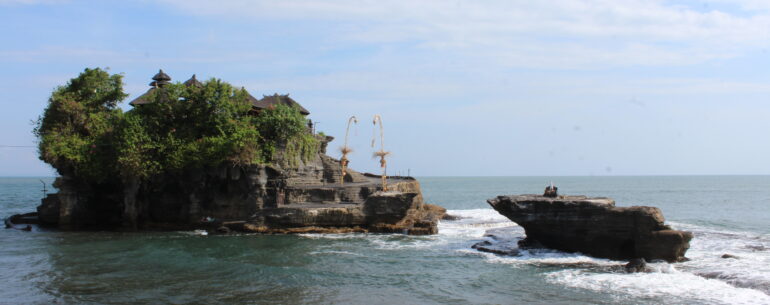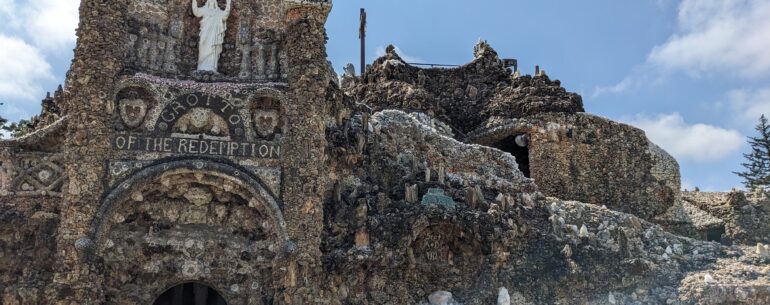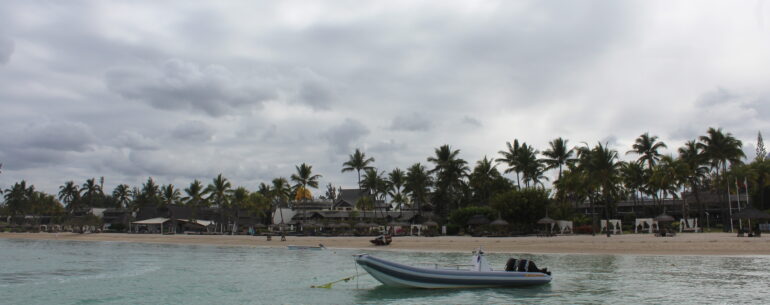A trip to Egypt is incomplete without experiencing a Nile cruise. What makes it special, is that few of the historical sites in Egypt can be accessed during a Nile river cruise. To me, this is the highlight of a Nile cruise – alighting and sightseeing at few historical sites and then getting back to the comfort of the ship.
Nile is among the largest rivers
The Nile river has two tributaries – White Nile that originates from Lake Victoria in the town of Jinja, Uganda and Blue Nile that originates from Lake Tana in Ethiopia. The two tributaries merge in Sudan before flowing through Egypt and draining into the Mediterranean sea. From the Victoria lake to the Mediterranean sea, the Nile flows a distance of ~6650 kms, making it the longest river in the world.
With an average width of 2.8kms after Aswan, and an average depth of 30ft., Nile is certainly a big river. The availability of water through the year makes Nile a perennial river.

Philae temple, Aswan, Egypt 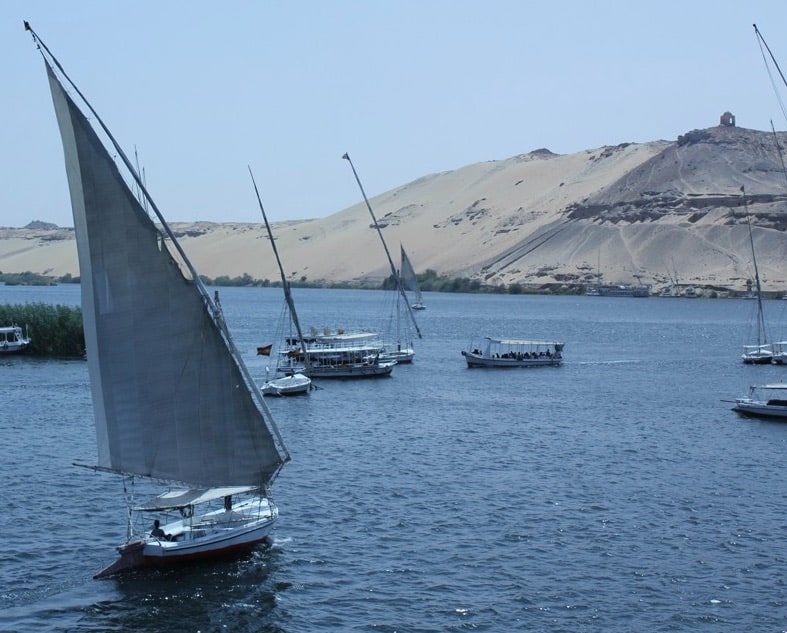
Felucca and other boats in Nile river, Egypt
Highlights of a Nile cruise
- Sightseeing at Aswan, Kom Ombo, Edfu, Karnak and Luxor. Availability of an Egyptologist for briefings. Mini buses are arranged for transfers where necessary.
- Passing through the Lock at Esna.
- Views of the passing desert scenery dotted with ancient monuments.
- Relaxing time spent on upper deck playing board games, watching the sunset, swimming or just nursing a drink.
- Average vegetarian meals. Moderately expensive alcoholic beverages.
- Opportunity for optional tours such as visit to a Nubian village, Hot Balloon ride in Luxor, Felucca ride, Abu Simbel tour, sound and lights show in Aswan/Luxor.
Typical 4D itinerary – Aswan to Luxor
There will be minor variations from ship to ship.
Day 1
Check in around 11AM or later. I was picked up at the Aswan railway station and the dock was just 5 minutes away. In the afternoon, I visited High Dam and Philae Temple. I took an optional tour to a Nubian village. The entire trip took about 3 hours. The boat ride back to the ship when the sun was setting was beautiful.
You can also opt for sound and lights show at Philae temple.
High Dam –
It is almost 4 kms long and 350 ft. high. It was inaugurated in 1971. There is also a Low Dam that was built in 1902. Since then, because of frequent flooding, the Philae temple was shifted from its original location to a nearby island before the completion of the High Dam.
Philae Temple –
Dedicated to Goddess Isis, the Temple was built in the 4th Century BCE. The temple can be divided into two symmetrical halves. The internal structures too were duplicated. There are few other structures as well in the complex.
Boat ride to a Nubian village –
I travelled in a smallish low motor boat and the Nile river appeared massive relatively. Nubians worship crocodiles and at one of huts, below the floor level, there was an enclosure with several medium sized crocodiles. I even held a baby crocodile, something I cannot even think of in the open. I don’t know what the crocodile are fed but they appeared rather docile, hence enabling photo opportunities.
The village, along the banks of the Nile river, was quite colourful. I am not sure if houses were painted merely because lot of tourists visit here, or if all Nubian villages are like this. I was offered tea at one of the houses and left a tip at the end.

Philae temple, Aswan 
Carvings in Philae temple, Aswan, Egypt 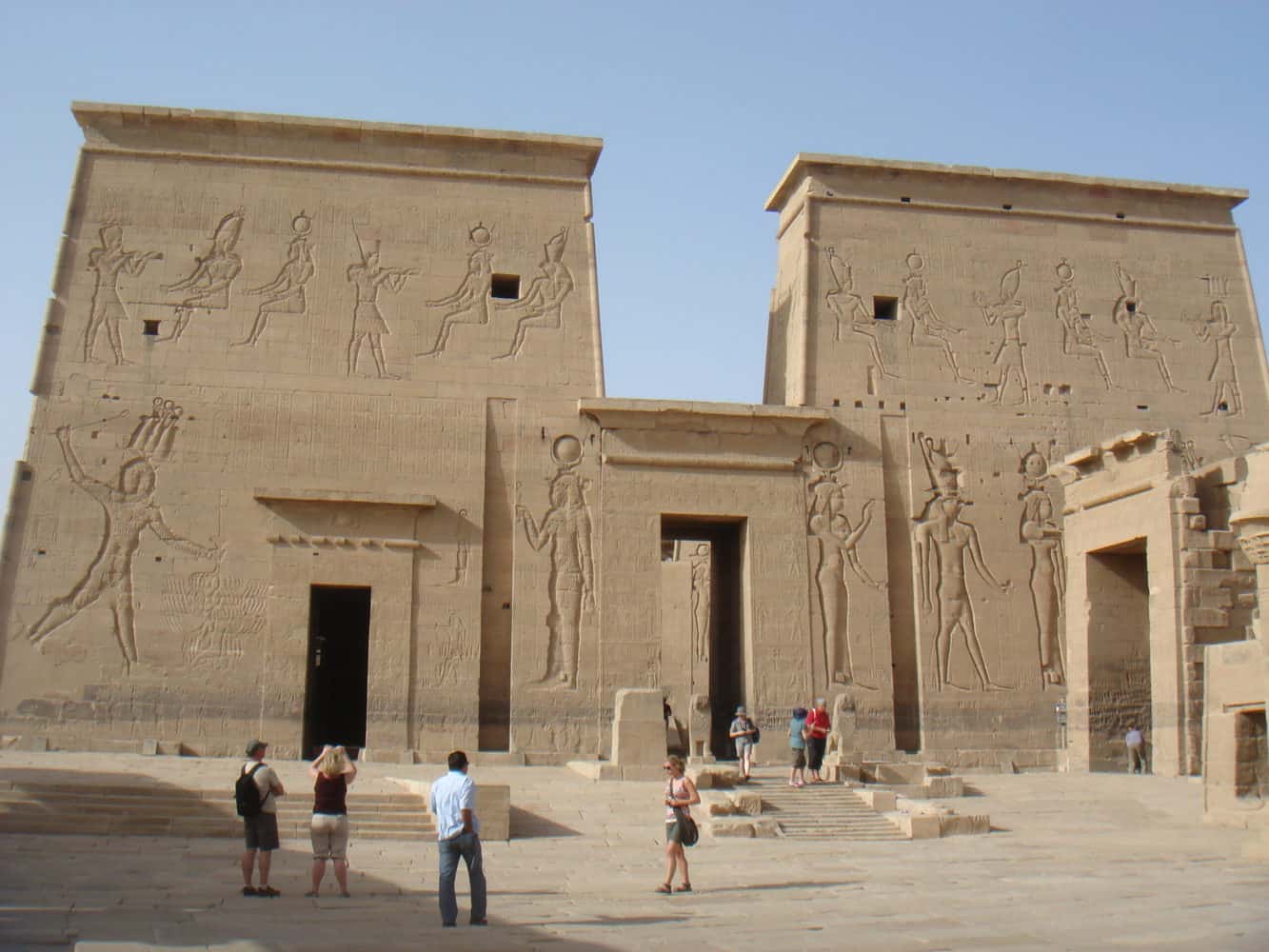
Philae temple, Aswan, Egypt
Day 2
Sail to Kom Ombo and then to Edfu and thereafter pass through Esna lock. Visit Temples of Kom Ombo in the morning and Edfu in the afternoon.
Kom Ombo temple
At a walking distance from Nile river, the Temple was built between 4th BCE and 4th century CE and was dedicated to Sobek, the god of crocodiles and Horus, the falcon headed god. The walls and the pillars have beautiful inscriptions. I saw the mummies of crocodiles here.
Edfu temple
Edfu is a historical town on the banks of river Nile famous for the Temple of Horus, built between 1st and 3rd century BCE. There are very beautiful inscriptions on the walls.
Esna lock
The ship passed through Esna lock just after I had finished dinner, around 9PM. The lock was opened in 1996 at an elevation difference of ~25ft. As is probably obvious, it was built to enable passage of boats due to construction of a barrage on river Nile. Construction of a Dam or a barrage increases the water level on one side. Once a boat or a ship is inside the lock, water level is either increased or decreased depending on the direction of travel. Only 2 cruise ships are allowed at a time but the process is automated and fairly quick.
I watched the entire process from the deck. Took about an hour. About the same time, several local enterprising Egyptians were selling their ware, either from a small boat or the raised platform on both side of the passage in the Lock.

Crocodile mummies at Kom Ombo, Egypt 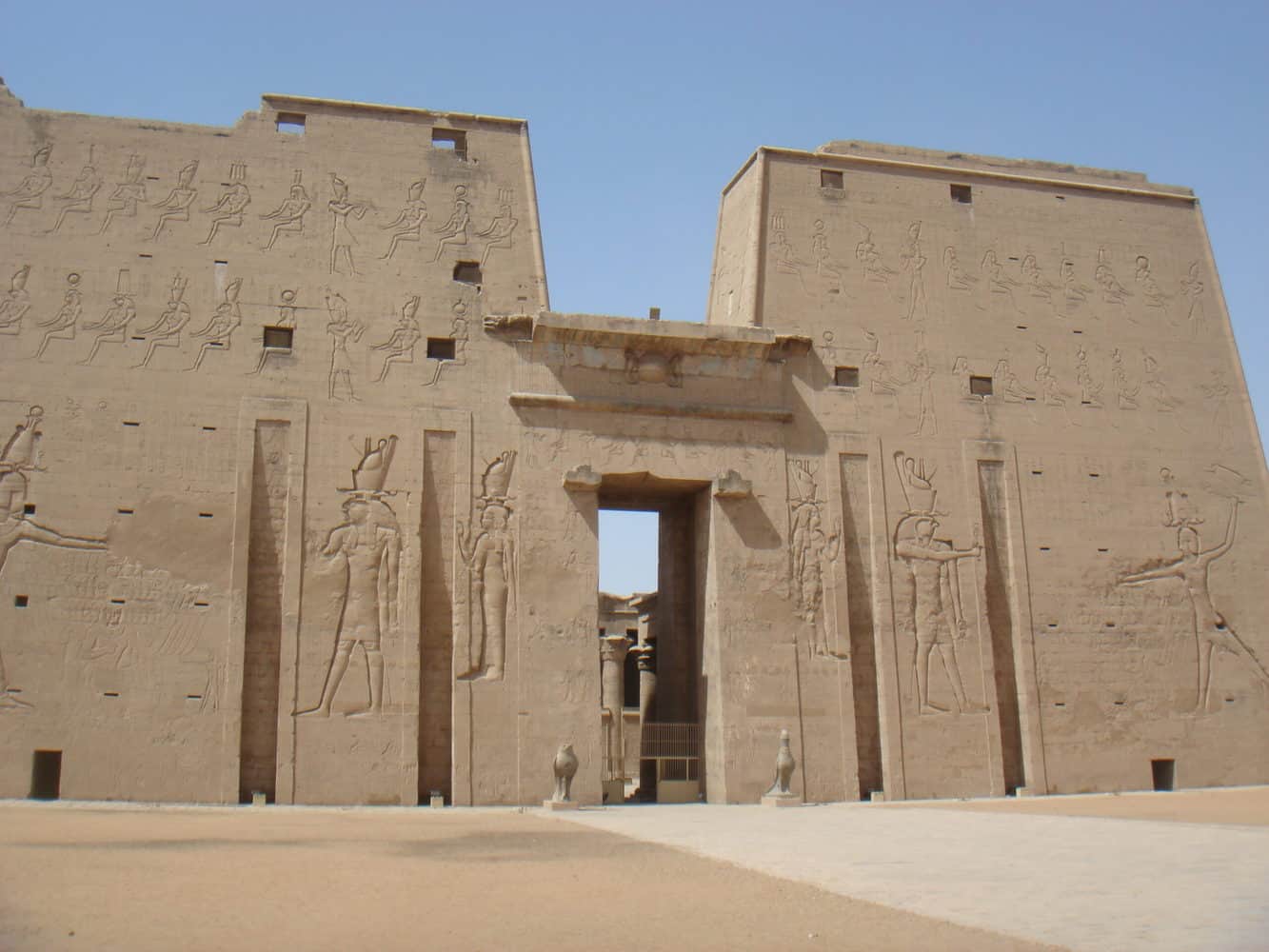
Edfu temple, Egypt 
The Esna Lock, Egypt
Day 3
Sail to Luxor early in the morning. This was a busy day as there is much to see in Luxor. Once an ancient capital called Thebes, Luxor is popularly called an open air museum. The monuments are located on both sides of the river(East Bank and West Bank).
Morning(west bank of Luxor)
Valley of Kings –
A World Heritage Site, some of the Kings, including Ramses II and Tutankhamun were entombed here. Built on mountain cliffs, there are over 60 tombs spread over a large area but only about 11 are open to public. The tombs can be accessed though walkways, the walls and ceilings of which are adorned with some wonderful paintings and inscriptions. Walkways open into larger chamber housing the tomb.
All the tombs are numbered as ‘KV..’ out of which ~11 are open to public. To visit the 3 best tombs, extra payment is required to be made. These are Seti I(KV 17), Tutankhamun(KV62) and Ramses V,VI(KV9). When I visited, the tomb of Seti I was not open but it is stated to be the most decorated tomb and the entry costs EGP 1,000. The general entry ticket provides access to 3 tombs of your choice and additional tombs can be visited with extra payment.
Only Tutankhamun tomb has mummy
Only the tomb of Tutankhamun has his mummy in the Valley of Kings(photography is prohibited). Other mummies and the remaining treasures/artefacts have been shifted to Museums but the grandeur of some of the tombs is to be seen to be believed. Egyptians believed in afterlife and hence, the bodies were mummified and the tomb filled with articles needed in the afterlife.
Be selective in visiting the tombs
My suggestion would be to visit 1 paid tomb at the minimum and 3 free ones that are not too far from the entry point. Include KV 2(Ramses IV) and KV11(Ramses III) as they are quite impressive.
Overall, I don’t think there is need to visit more than 5 tombs. Check with your guide. You will need about 2 hours here at the minimum.
The Colossi of Memnon –
Two statues, ~60ft tall, side by side. It is quite an inspiring sight, despite defacement over time.
Hatshepsut Temple-
Built below a massive cliff, the Mortuary Temple of Hatshepsut is dedicated to Sun god. Built in three layers, it rises to almost 100ft. It is believed to have been far beautiful place with gardens all around, as compared to the stony dry look it presents today.
Valley of Queens
I did not have time to visit Valley of Queens. The wives of Pharaoh’s and other members of royalty and nobility were buried here. Out of ~90 tombs, only a few are open to public. The tomb of Nefertari is believed to be spectacular but expensive at EGP 1000(or maybe more now).

Inside the tomb of Ramses III, Valley of Kings, Luxor, Egypt 
Valley of Kings, Luxor, Egypt 
The Valley of Kings, Luxor, Egypt 
Hatshepsut temple, Luxor, Egypt 
Colossi of Memnon, Luxor, Egypt
Afternoon(East bank of Luxor)
Luxor Temple –
Built around 14th century BCE, it is dedicated to Kingship, and not to any particular god or king. It is believed many of the Pharaohs were crowned in this temple.
Karnak temple –
It was excavated in mid 19th century CE and is believed to be one of the largest temples ever built. Built over several years before CE, it is dedicated to Egyptian gods Amun, Mut and Khonsu. If you look at the 3D drawings, the temple is very large and impressive. But most of it in ruins today. The task of restoration continues.
I skipped the optional sound and lights show at Karnak temple as I had seen similar show at Giza that is rated higher.

Carvings in Luxor temple, Egypt 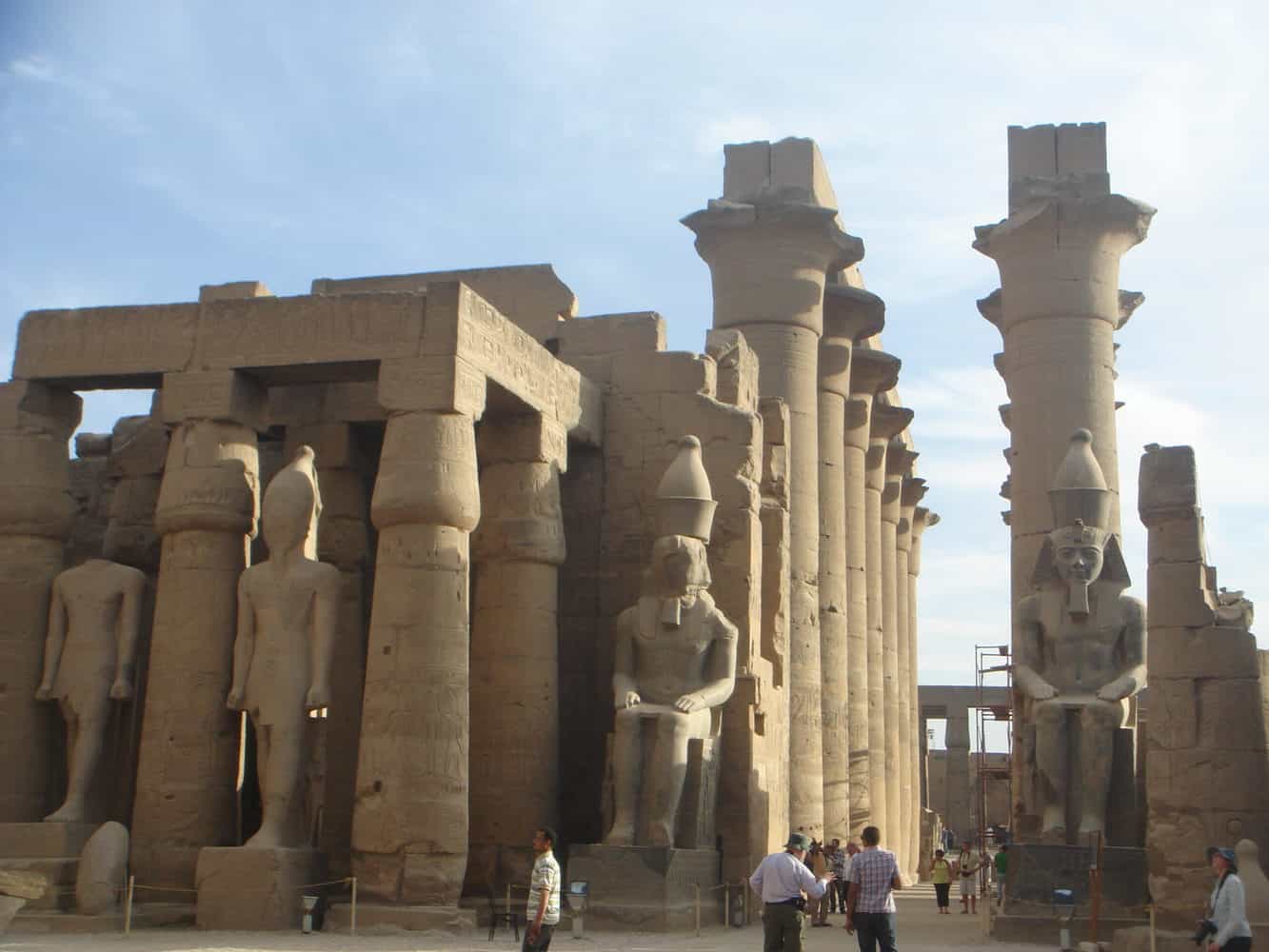
Luxor temple, Egypt 
Karnak temple, Egypt 
Karnak temple, Egypt
Day 4
I disembarked after breakfast. There is optional balloon ride early in the morning. Skip it if you have safety concerns.
I had the choice of doing a bit more of sightseeing in Luxor before proceeding to Hurghada, say Valley of Queens or Luxor museum. In hindsight, it was a good decision to drive straightaway to Hurghada as I felt I had enough of the monuments!

